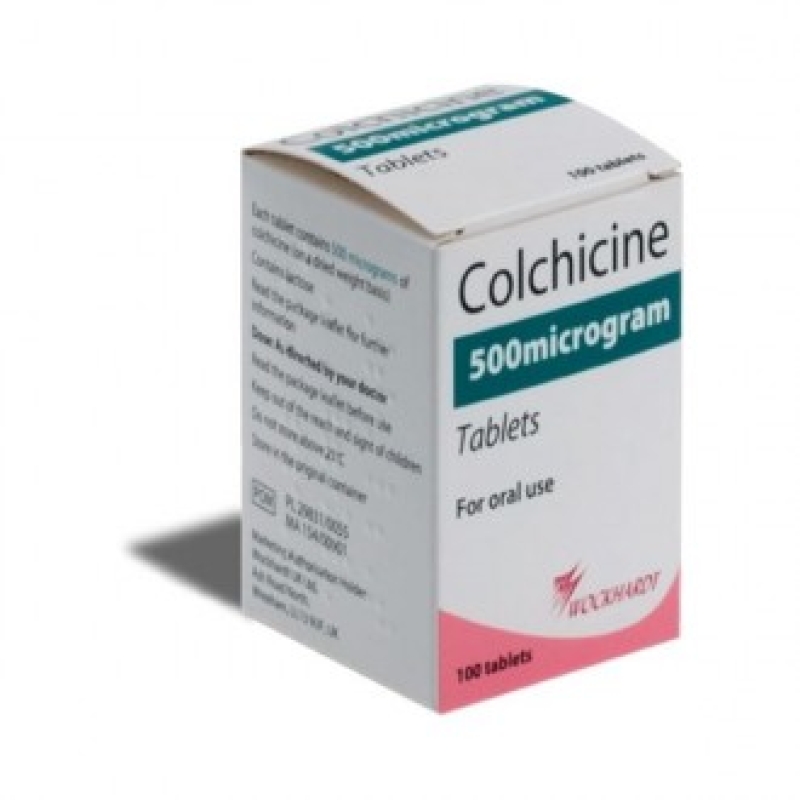How to Order ? Simple.
-

1.
Select Treatment
Choose from our treatment options or speak to the in-store pharmacist for advice
-

2.
Complete Medical Questionnaire
Complete our free online medical consultation to be reviewed by our Clinical Team
-

3.
Collect Medication from Local Pharmacy
We will notify you when your medication is ready for collection
Advice for Gout
Gout is a form of inflammatory arthritis caused by the accumulation of uric acid crystals in the joints. It typically manifests as a sudden and intensely painful attack, often affecting the big toe, although it can involve other joints such as the ankles, knees, wrists, and elbows. During an attack, the affected joint becomes red, swollen, warm, and very tender, with symptoms often peaking within hours. Gout episodes can last for days or weeks if not treated properly, and individuals may experience recurrent flare-ups over time.
The primary cause of gout is an elevated level of uric acid in the blood, a condition known as hyperuricemia. This can occur either because the body produces too much uric acid or because the kidneys do not excrete enough of it. Several factors increase the risk of developing gout, including a diet rich in purines (which are found in red meats, shellfish, and alcohol), obesity, certain medications, genetic predisposition, and other medical conditions such as hypertension and kidney disease. Lifestyle factors, like dehydration and alcohol consumption, can also trigger gout attacks.
Diagnosis of gout is based on clinical presentation and confirmed through laboratory tests. Blood tests show elevated uric acid levels, while analysis of joint fluid obtained through aspiration can reveal the presence of needle-shaped uric acid crystals under a microscope. These findings, along with the characteristic symptoms, help confirm the diagnosis.
Treatment focuses on relieving pain and inflammation during acute attacks and preventing future episodes. Nonsteroidal anti-inflammatory drugs (NSAIDs), colchicine, and corticosteroids are commonly used medications that help control symptoms. Long-term management includes lifestyle modifications such as adopting a low-purine diet, losing weight, staying well-hydrated, and avoiding alcohol. Medications that lower uric acid levels, like allopurinol or febuxostat, may be prescribed to reduce the risk of recurrent attacks and prevent complications such as tophi or joint damage. Proper management of gout improves quality of life and prevents joint destruction over time.
The symptoms of gout typically appear suddenly and progress rapidly, often reaching their peak within a few hours. The most characteristic symptom is intense pain in the affected joint, which can be so severe that even the touch of bedding or clothing causes discomfort. The affected area becomes swollen, red, and warm to the touch, and the skin over the joint may appear shiny and taut. The first joint most commonly affected is the big toe, often referred to as "podagra," but other joints such as the ankles, knees, elbows, wrists, or fingers can also be involved.
During a gout attack, the joint is incredibly tender, and movement or pressure can worsen the pain. The skin around the joint may appear red or purple, and there may be a feeling of heat emanating from the area. The episodes typically last from a few days to a week if untreated, but without proper management, recurrent attacks can occur, sometimes more frequently.
In some cases, the symptoms may be preceded by a prodrome of mild discomfort or aching in the joint, which worsens suddenly. As gout progresses, chronic joint inflammation can lead to persistent pain and swelling, with the formation of tophi—firm, chalky deposits of urate crystals under the skin, commonly around the joints and cartilage. These tophi can cause deformity and limit joint mobility if left untreated.
Other associated symptoms may include fever (especially during acute attacks), chills, and general malaise due to systemic inflammation. The intense pain, swelling, and redness make gout a debilitating condition if not properly treated, but prompt diagnosis and management can effectively alleviate symptoms and prevent long-term joint damage.
The primary cause of gout is an elevated level of uric acid in the blood, known as hyperuricemia. Uric acid is a waste product formed when the body breaks down purines, substances found naturally in the body and in certain foods. When uric acid is produced in excess or not excreted efficiently by the kidneys, it can accumulate in the bloodstream. Once the uric acid level surpasses a certain threshold, it can crystallize and deposit in the joints and surrounding tissues, leading to inflammation and pain associated with gout.
Several factors contribute to the development of hyperuricemia and gout. Consuming a diet high in purines—such as red meats, shellfish, and organ meats—can increase uric acid production. Alcohol consumption, especially beer and spirits, interferes with uric acid excretion and raises levels. Obesity is another significant risk factor because excess body weight increases uric acid production and reduces kidney efficiency in eliminating it. Certain medications, including diuretics and low-dose aspirin, can also elevate uric acid levels.
Genetics play a role, as some individuals inherit a tendency to produce more uric acid or have difficulty excreting it properly. Medical conditions such as hypertension, diabetes, kidney disease, and metabolic syndrome are associated with higher uric acid levels. Lastly, dehydration and acute illness can also trigger gout attacks by increasing urate concentrations in the blood.
In summary, gout results from a combination of genetic, dietary, lifestyle, and medical factors that lead to increased uric acid levels and crystal deposition in the joints.


